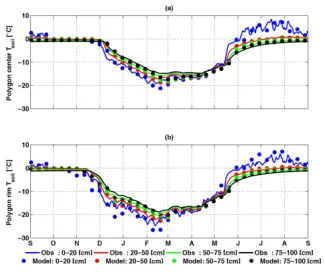Microtopographic features, such as polygonal ground, are characteristic sources of landscape heterogeneity in the Alaskan Arctic coastal plain. We published results from an analysis of snow redistribution (SR) and lateral subsurface processes on hydrologic and thermal states in the NGEE Arctic polygonal tundra site near Barrow, Alaska. We extended the land model integrated in the E3SM to redistribute incoming snow by accounting for microtopography and incorporated subsurface lateral transport of water and energy (ELM-3D). Ten-year-long simulations were performed for a transect across the polygonal tundra landscape to isolate the impact of SR and subsurface process representation. Predictions were very accurate compared to observations when SR was included, including with observed differences in snow depth between polygonal rims and centers and observed soil temperature vertical profiles in polygon rims and centers. The spatial heterogeneity of snow depth during the winter due to SR generated surface soil temperature heterogeneity that propagated in depth and time and led to ~10 cm shallower and ~5 cm deeper active layer depths under polygon rims and centers, respectively. Additionally, SR led to spatial heterogeneity in surface energy fluxes and soil moisture during the summer. Excluding lateral subsurface hydrologic and thermal processes led to small effects on mean states but an overestimation of spatial variability in soil moisture and soil temperature as subsurface liquid pressure and thermal gradients were artificially prevented from spatially dissipating over time. Our integration of three-dimensional subsurface hydrologic and thermal subsurface dynamics in the E3SM land model will facilitate a wide range of analyses heretofore impossible in an ESM context.
Citation: Bisht, G., Riley, W. J., Wainwright, H., Dafflon, B., Yuan, F., and Romanovsky, V. E.: Impacts of microtopographic snow-redistribution and lateral subsurface processes on hydrologic and thermal states in an Arctic polygonal ground ecosystem: a case study using ELM-3D v1.0, Geoscientific Model Development, 11, 61-76, https://doi.org/10.5194/gmd-11-61-2018, 2018.
For more information, please contact:
Gautam Bisht
William Riley
wjriley@lbl.gov

